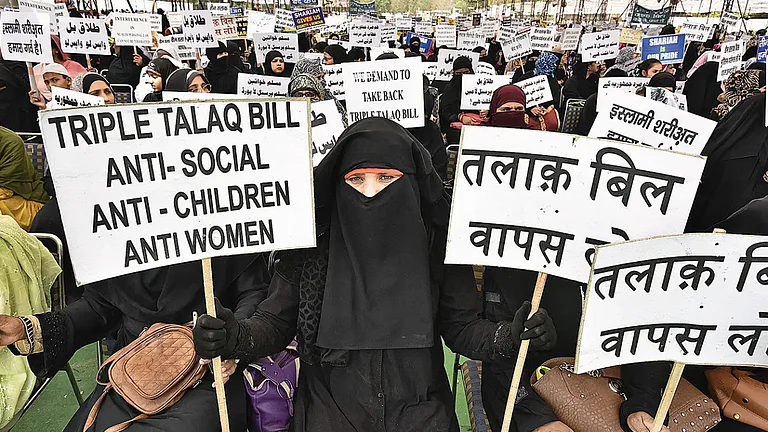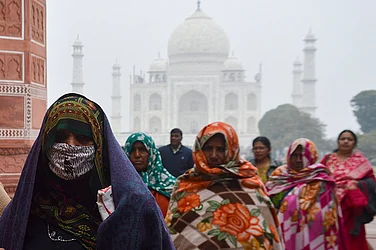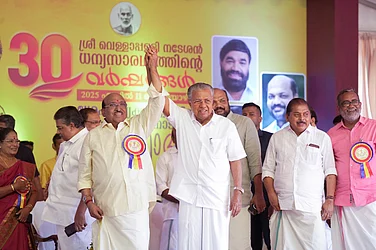
Couples in their 50s and 60s are getting divorced: grey divorces are a rising phenomenon.
Key triggers are abuse, infidelity, substance abuse, incompatibility and the 'Nesting Alone–Nesting Together' syndrome.
Senior women face challenges in divorcing if they are financially dependent or have unsupportive children.
Grey divorces—when couples in their 50s, 60s or 70s separate after decades together is on the rise among the middle class. Usually the result of years of emotional distancing, growing apart, or being taken for granted, it is quite different from divorce in younger years, which is often urgent, volatile.
After a shared history of decades, children, grandchildren etc., often the cement in a marriage has quietly eroded, especially with retirement, house-bound roles and children flying the nest. That’s when a grey divorce sets in as a slow undoing of the relationship, catalysed by routine, cultural expectations and exhaustion from deeply gendered roles. It’s not always about conflict, rather about a lack of compatibility, or simply outgrowing a version of togetherness that no longer serves either partner. It is preceded by several years of resignation and is chiefly motivated by the desire to preserve or pursue later-life wellbeing—often with the support of adult children.
In the Indian context, where marriage is often rooted in duty and obligation over dialogue and connection, it is women who, after years of caregiving and emotional labor, begin to seek dignity, space and a sense of self. But the reasons for grey divorce are rarely symmetrical—or fully known.
In what is perhaps the first academic study on grey divorces in India, Fasalu Rahman, a PhD researcher from Tata Institute of Social Sciences (TISS) Mumbai has filed his dissertation on Grey divorces in Kerala, the state of his origin. In several of his case studies (42 in total; 22 women and 20 men), the key triggers of grey divorce identified were emotional and physical abuse, infidelity, substance abuse, growing incompatibility in later life, shifting personal interests and the “Nesting Alone–Nesting Together” syndrome, wherein spouses remain legally married but live separately due to caregiving or migration-related obligations. In some cases, the children of the separating spouses are married and settled abroad and wanted the “mother only” to travel abroad and take care of their children, thereby creating an emotional distance between the couple. Often, when the father is left alone, he enters an extramarital affair with the maid or cook, which becomes a starting point for eventual separation.
“On an average there are three to five cases per month of marriages ending after thirty years,” says Rahman. And this is in Idukki district, comprising a primarily Christian population that doesn’t support divorce.
In one case, Rahman recalls, the woman, a beedi worker, was constantly admonished by her husband, an autorickshaw driver, for not bearing a male child. They had three daughters, raised singlehandedly by her since the husband was an abusive alcoholic. Finally, when she was 58 and her husband was 65, the daughters supported her to get a divorce.
But often, children may not have the best of intentions and are looking out for themselves. In another case in Rahman’s study, a son got his 65-year-old mother to sign a mutual consent divorce from his father (73) to obtain some land from the father. The father agreed to transfer the land to the son’s name in exchange for a divorce, since his wife was often away in New Zealand, caring for their daughter’s children. The father wanted a divorce to enter a new marriage.
The reasons for a grey divorce could be multi-faceted and never fully known. However, when a divorce is contested in the case of an older couple, it can be overwhelming. “While divorce continues to carry social stigma, this stigma is markedly heightened when older women seek divorce. Even within the family court system, older women pursuing divorce often encounter prejudicial attitudes and discriminatory treatment,” says Dr Asha Banu Soletti, Rahman’s advisor and guide. She is a Professor at the Centre for Health and Mental Health, School of Social Work, TISS. “There should be separate norms and guidelines for older adults, particularly in their 60s and 70s, in the family court,” she adds.
In one case, a 45-year-old woman approached the family court on multiple occasions but was counselled to continue her marital life in consideration of her children. Her relatives also pressured her to stay on in the marriage. Ultimately, in her later years, she once again petitioned for divorce and it was granted. Perhaps it is time to reorient family court counsellors that the prevailing measure of “success” lies not in reuniting couples but determining what is in the best interests of both partners.
“Sometimes, it is not even about the divorce,” says Audrey D’Mello, director of the Majlis Legal Centre in Mumbai, an NGO that works with marginalised women, providing them with legal advice and support. “Most older women who have suffered years of physical, verbal and emotional abuse from their partners prefer to slowly uncouple [at] the first opportunity they find,” she adds. Majlis was founded by D’Mello’s mother Flavia Agnes to provide victims of violence access to justice by providing them with legal tools.
She refers to a Majlis case of a 65-year-old woman, Nilima* married to 72-year-old Kamlesh*. After years of marital abuse, Kamlesh threw her out of their home, and she began living with her sister, who was supportive. This forced rehoming made her experience a tremendous peace of mind, as her mental health had been out of whack due to the prolonged sustained violence in her marriage. It was as though she had found liberation by fluke and realised that she had a choice not to endure the kind of life and marriage she had. “I am not going back,” she told her lawyers at Majlis, even as they reminded her that she had no financial support other than through her marriage.
If a woman is not financially independent, as is often the case with women in their 60s and 70s now, and if the children are not supportive, grey divorces become much more challenging. “Women will make this choice only when they have active support, or are fully aware of what is at stake and what assets can they claim,” adds D’Mello.
Whatever the scenario, it is important to ask the question: What makes a relationship worth staying in—at any age?
“COVID19 was a game-changer in the way we looked at stigma attached to leaving a partner or changing partners,” says Amrita Vijay, a lawyer based in Hyderabad. “Access to the internet and social media changed both the perception and the notion of what it is to be in a fulfilling and respectful relationship. Very often, it is not about an abusive husband, but the inherent unhappiness in a marriage and people realising that it is never too late to find peace and quiet. Women began to question: if not now, when?”
For women in their 30s and 40s, the issue of how to fend for the kids’ education, pay rent, etc., dissuades them from seeking divorce. But once the kids are grown up and out of the scene, a re-examination begins, and women seek a second chance at a life of peace. By this time, they are already leading separate lives from their spouses, even sleeping in separate rooms, and the fear of stigma has also considerably reduced. Marriage then, becomes not the only relationship that defines companionship.
Many older-couple relationships have also been normalised as the stigma attached to finding new partners at an older age reduces. Kanti* is an 82-year-old widow, living with an 87-year-old widower who was a family friend. Her kids are okay with it and she is not keen to add the tag of marriage to their relationship.
“Nothing is in isolation anymore. The issues are all intertwined and the changing economy has driven these changes and these ‘new normals’ in relationships, even in smaller cities and towns,” adds Amrita.
Whether new normal or not, grey divorces nudge us to re-examine the role of nurturing in a relationship. It makes us view ageing not as a decline, instead a space for renewal, honesty and emotional truth. Divorce is not failure, after all—it can be an act of reclaiming dignity, of choosing mental well-being over quiet endurance.
And most importantly, can we begin to talk about divorce without attaching tags of failure or shame? Can we normalise seeking emotional well-being over endurance? After all, everyone deserves a second chance, or at the very least, a chance to live their later life in peace.





























